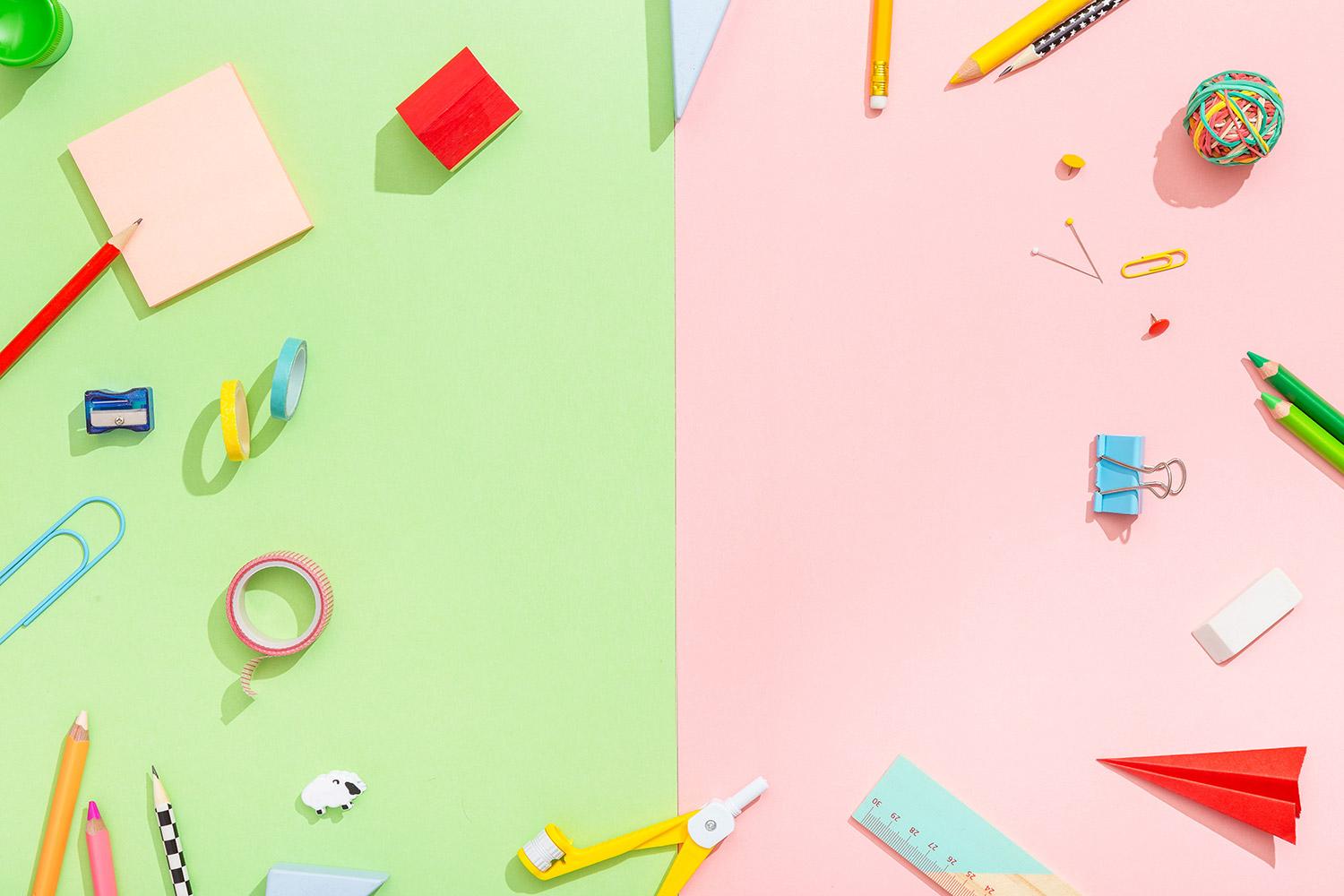
Changing Your Beliefs
AND YOUR INCLUSIVE CLASSROOM WITH UDL
Goals & Objectives
After this presentation you will:
- Understand why change is necessary to transform schools.
- Have at least one a-ha moment about what UDL and unlearning is.
- Self-reflect on your own experiences or practices to identify a goal for how you use this information moving forward.
TIME TO REFLECT
Think of all the teaching initiatives you have been encouraged to try in your career. Which ones do you continue to implement and which ones were phased out? Why do you think some strategies remained in your practice while others did not?
THE PROBLEM IS...
What if there was a solution?
What if UDL could transform education to develop student-driven, engaging, rigorous learning experiences in inclusive environments for everyone?
UNDERSTANDING UNIVERSAL DESIGN
Think about one of the items pictured...
Ask:
1. How does the item address a specific need? What barriers are reduced? (For example; Ipad enlarges text for someone with a visual impairment)
2. How does designing for specific individuals benefit others? (For example; Ipad could help someone learning to read, recovering from eye surgery, or suffering from degenerative eye disease (glaucoma))
The Theory of Universal Design
- Not one size fits all- but alternatives for everyone
- Not added on later- but designed from the beginning
- Not access for some- but access for everyone.
UNIVERSAL DESIGN FOR LEARNING (UDL)
- Framework for Instruction
- Organized around 3 Principles
- Based on Learning Sciences
AN ANALOGY
Options for Getting Started with UDL
You have now been introduced to Universal Design for Learning (UDL). UDL provides a framework for understanding the differences among learners (learner variability) and to plan ahead for this. UDL is a big topic and should be taken on slowly, otherwise, it can become one more thing and feel overwhelming.
Choose one of the options in the google doc (or determine another option) to get started.
TRADITIONAL INSTRUCTION
DIFFERENTIATED INSTRUCTION
UNIVERSALLY DESIGNED INSTRUCTION
OPTIONAL ACTIVITY: Rewording the UDL Guidelines
We want to build a language with students that aligns with the UDL guidelines
- Use the graphic organizer provided to rewrite the UDL guidelines using language from your vocabulary that you can use with your students.
- Examples for each of the guidelines are provided.
- “Self-regulation” might become something like “I believe that I can get the job done”
Is an apple still red if there isn't any light?
THINKING ABOUT CHANGE
Think of a time you experienced something a new way….For example, consider the first time you used Lyft or Uber, tried Siri or Alexa, or saw a Fitbit or Apple Watch…
- What was your initial experience/impression of this new way of doing things?
- What were the trade-offs/benefits of that change?
- What parts of the old experience do you still want to hold onto?
1. Understanding Variability
Activity: Mapping Your Own Variability
Consider your own jagged profile?
- What are your strengths and weaknesses?
- How do these align with the background experiences you’ve had?
- How do these strengths and weaknesses shift based on the context? And
- How do they influence your teaching preferences or environment?
Take a few moments to map your own jagged profile for 3 different contexts…
2. Know Your Goals
3. Transform Tried & True Techniques
4. Prioritize Engagement
ENGAGEMENT
Ask yourself the following questions:
- How do we find relevant and authentic examples, ways for students to make choices, and options to minimize potential threats and distractions?
- How do we invite students to make the goals salient, vary the resources and demands for a task, foster collaboration and provide process-based feedback?
- How do we promote expectations for all of our students, facilitate personal coping skills, and develop self-reflection as an important learning skill?
5. Scaffold Expert Learning
THE PYGMALION EFFECT
Q: What’s the biggest barrier to achieving expert learning?
A: Our Expectations
OPTIONAL ACTIVITY: Time to Reflect
What stage of Unlearning are you in?
- Take a moment to read through the self-assessment.
- What resonates with you?
- Determine which stage you currently identify with.
MAKE IT YOURS
Discussion Questions
- Who has been your salesperson, maven or connector?
- Which will you strive to be as you share your UDL journey with others?
- Share at least one aha you’ve had as a result of this session…
THE GOAL...
Is not to "do" UDL
But to "use" UDL
To reduce or eliminate barriers
& Design for all students to become expert, empowered learners.
ADDITIONAL RESOURCES
- Explore this article from Katie Novak on asset-based vs. deficit-based mindsets at www.novakeducation.com/student-variability/
- Watch this TEDx with Todd Rose at bit.ly/Todd-Rose-TED
- Listen to this podcast featured on Fresh Air on “Habits: How They Form And How To Break Them” with Charles Duhigg - with bit.ly/Habits-Article
- Check out Visible Learning A Synthesis of Over 800 Meta-Analyses Relating to Achievement by John Hattie. Download the free pdf version of the book - bit. ly/Visible-Learning-Hattie
- Tips and tricks for building UDL in your classroom from EdSurge- https://www.edsurge.com/news/2018-08-13-tips-tricks-and-tools-to-build-your-inclusive-classroom-through-udl
Catherine Wilson
You can find me at:
Email: clearlycat@gmail.com
Website: www.ThinkinginCommon.com
Location: Portland, OR, USA













































